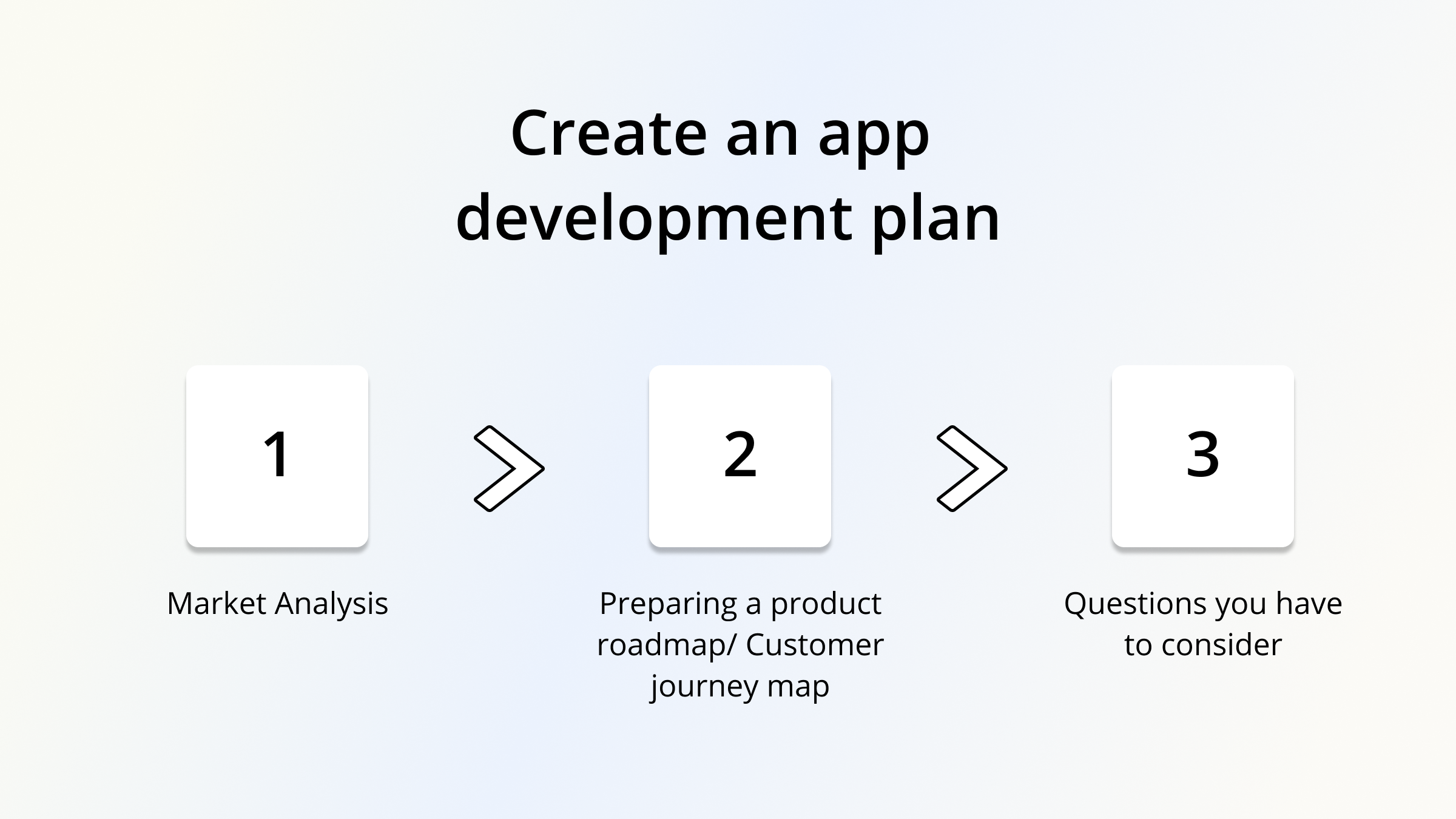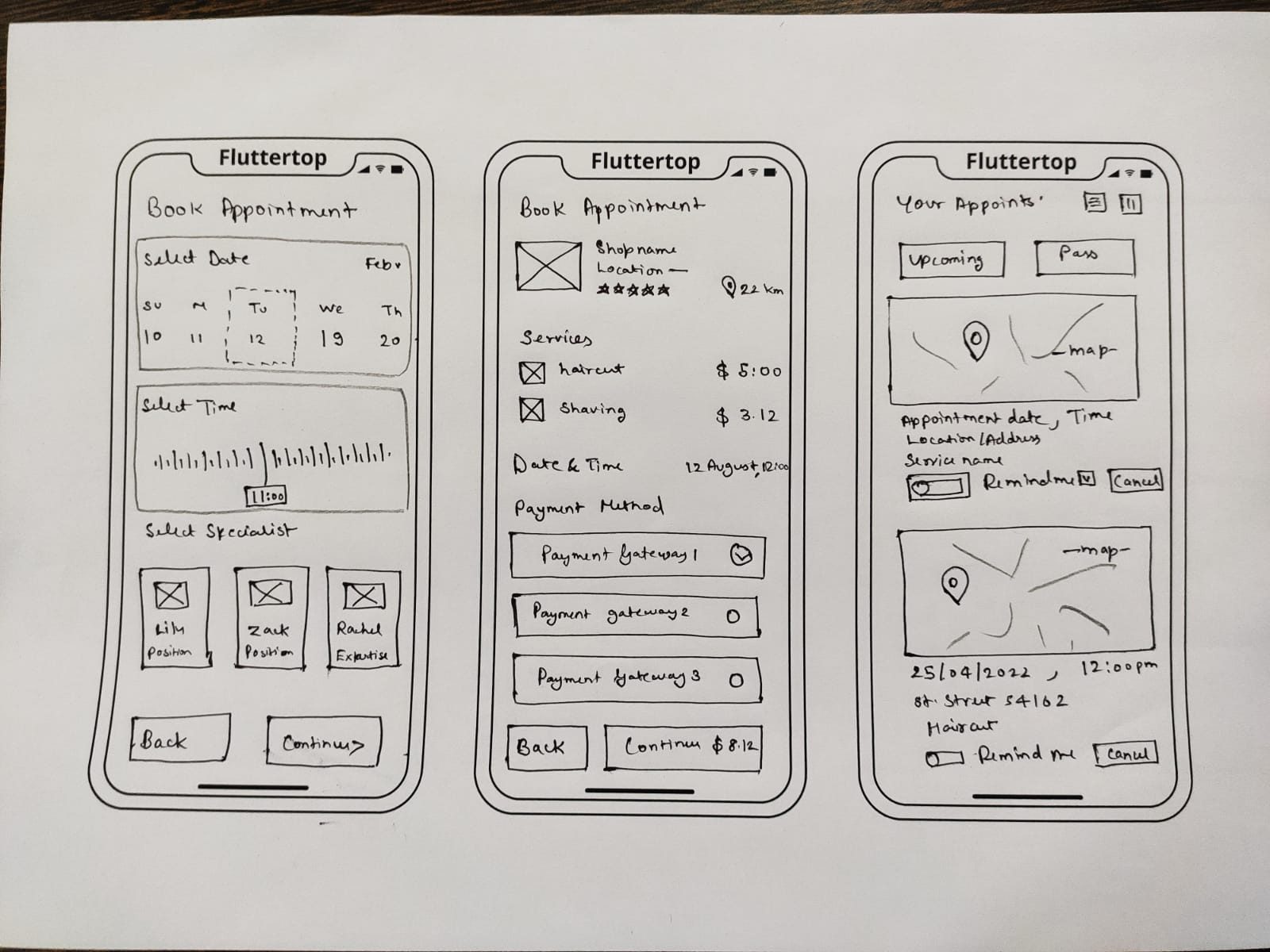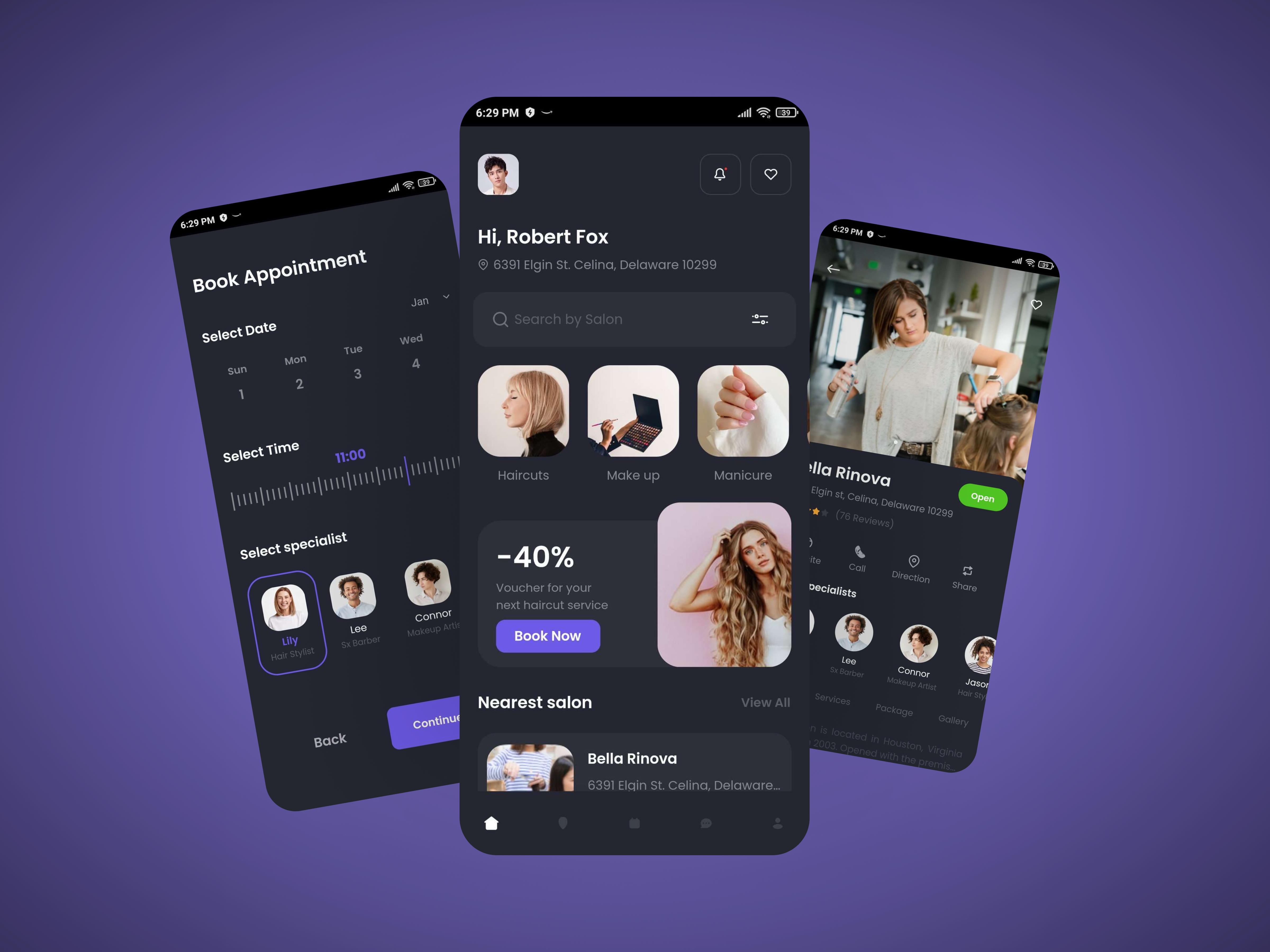Overview
According to current estimates, global mobile app revenue in 2020 will be $581.9 billion, with an annual growth rate of $100 billion or more. More and more businesses are embracing mobile apps because it is handy for their customers and because it pays off. However, if you start digging into the subject, you’ll find yourself with many difficult questions to answer. Start at the beginning: how do you make a mobile app?
There are six milestones in the mobile app development process:
- Putting together a strategic plan
- Designing an app’s user interface and experience (UI/UX).
- Development of mobile applications
- Testing.
- Launch of the app.
- App support system.

Step 1 – Putting together a strategic plan
This is a collaborative effort between the client and the development team. The client takes the initial step to provide the business goal which gets transformed into an up and running application by the development team. Fluttertop also provides detailed consultation to polish the idea and take it to the next level.
- Market Research
Although this phase is not directly related to developing commercial mobile apps, it is a necessary step. App development companies (like the rest of businesses) want their clients to keep coming back to them for future work that is why starting with competitive research and providing the best services is critical.
To do so, organisations conduct a thorough market analysis and look for similar mobile apps. If there are a few (or a lot), the company looks at their primary flaws and benefits to avoid the former and strengthen the latter in the app they’re making for you.
If your situation is exceptional or sophisticated, several organisations (like Fluttertop) will add a Customer Development step to demonstrate that you’re on the right track.
- Creating a customer journey map/product roadmap
The entire app development process is long (on average, it takes around 4 to 6 months) and intricate, building a “map” is critical.
The team also works with the product backlog, which is a collection of issues, elements, insights, and ideas that have come up while working on the product. It would be a mistake to think of backlog generation as a single-stage, a protracted and never-ending process.
You should think about these questions
Because the app development business works closely with its clients during the initial stages, there are several questions you should discuss in detail.
- What are your project’s goals and objectives?
- What is your target market?
- What kind of investments are needed?
- What is your estimated development timeframe for your app?
- What kind of app support will you get when the app is out?
Of course, this list is not the same for all, as each project is unique. However, it provides you insight into what challenges you should keep in mind while communicating with your app developers.
Step 2 – Designing an app’s user interface and experience (UI/UX)
While making a mobile app for your business, you want it to function flawlessly so that your users can interact with it easily. Any app is first and foremost a user-oriented product, and the easier it is to use, the more it will be downloaded. Developers pay close attention to the user interface (UI) and user experience (UX) design to ensure a smooth engagement with the app.
UI design is the visual medium that determines how users see the app. The way people engage with your app is what UX design is all about. Both are crucial since the initial impression is the most significant when it comes to a user.
- Workflows and information architecture
Information architecture is a design paradigm in which all of the details of the app, its functions, and its user interface are specified.
Assume your app is designed to assist users in managing their work schedules. In this scenario, it can communicate with the system clock, and the app’s information architecture will govern this capability. On the other hand, the workflows describe how users engage with the app in a step-by-step manner.
- Wireframes
 To construct an app, mobile app designers must first create the app’s “overarching picture.” It’s analogous to drawing sketches on paper; wireframes are the digital equivalents. Because your future app will have functional needs, you’ll need wireframes to see how these requirements will be implemented.
To construct an app, mobile app designers must first create the app’s “overarching picture.” It’s analogous to drawing sketches on paper; wireframes are the digital equivalents. Because your future app will have functional needs, you’ll need wireframes to see how these requirements will be implemented.
The designer focuses on the user experience and general aesthetics when working with wireframes rather than colours and styles. The most significant UI elements, such as buttons, sliders, lists, icons, progress bars, and so on, are frequently depicted in wireframes. They display the element sizes and locations in the app layouts. They don’t appear to have any wireframe-to-wireframe interaction.
- A style manual
Standards and uniformity are the most important aspects of style guides. They are the guidelines that contain all of the information required for your app’s design approach. They have information such as font families, colour palettes, and how your company’s identity will be reflected in the app design.
- Mockups
 The final implementations of your app’s design are mockups. They’re a blend of your app’s wireframes and style guide. This helps to see app through the eyes of its prospective users. Figma, Sketch, and Adobe Photoshop are the most common tools for creating mockups. We make these in Figma at Fluttertop.
The final implementations of your app’s design are mockups. They’re a blend of your app’s wireframes and style guide. This helps to see app through the eyes of its prospective users. Figma, Sketch, and Adobe Photoshop are the most common tools for creating mockups. We make these in Figma at Fluttertop.
- Prototypes
Prototypes show the design “in motion.” They’re the demo versions of your app, and they’re great for imitating the genuine user experience. Prototypes are time-consuming tasks, yet they’re necessary for testing.
When the specifications for the functionality of the upcoming app are not yet fully formed, some app development companies prefer to produce prototypes during the wireframing stage. Figma, Balsamiq, and InVision are the most extensively used prototype tools.
Fluttertop uses Figma to create mockups and prototypes. Although we still use InVision to develop interactive prototypes occasionally, we find Figma to be the most convenient tool because it has all of the functionality we need.
Step 3 – Development of the mobile application
It’s finally here: the actual development stage. It entails writing sections of the code, testing it, and creating an app that people can install. The back-end/server technologies, APIs, and the mobile front-end make up the entire process.

- Server technology and back-end
The first section contains server-side objects and the database required to support your app’s functions. If app developers leverage an existing backend platform, they may need to make some changes to assure the app’s operation. The server-side objects created during this process should be tweaked and tested with the rest of the programme.
- API
An API is an application programming interface. These are software components that connect the app to the back-end server and the app to the rest of the operating system’s components.
- Front-end for mobile application
The front-end is the interface which users engage with. Mobile apps typically incorporate interactive user experiences that use back-end APIs to manage data. The programme can use internal data storage in specific instances, such as when users need offline maps or other offline features.
- Languages for programming
Different app development organisations are guided by various factors when selecting a programming language for their app. The most important criterion is that the language is supported by server technology.
The situation becomes a little more complicated when it comes to native mobile apps because app developers must use one of the suggested technology stacks, such as Kotlin for Android and Swift for iOS. There are usually several languages and technology stacks acceptable for your app; it is up to the app developers to choose the best one.
We use Flutter at Fluttertop because it is the most convenient software development kit for cross-app development.
- Agile Development Approach
Mobile technology is evolving at a breakneck pace, with new versions of mobile operating systems being published every few months. In addition, new mobile gadgets are released regularly. These variables combine to make agility a must-have strategy for the bulk of app development firms. Fluttertop is no exception when it comes to adopting an agile development strategy.
Working with the entire development process in cycles is the essence of the agile, mobile app development method. The whole procedure is broken into sprints after the team has examined the workload. Each sprint in Fluttertop lasts 2 to 4 weeks. We give our 100 per cent to ensure that iteration results in a new app configuration with new functionality.
The Fluttertop staff is always responsive to the needs and desires of its customers, intending to produce a high-quality product.
Step 4 – Testing
It’s just as crucial to test your mobile app to design it. It could perhaps be more important – let’s look at why.
- Assurance of Quality (QA)
Quality assurance testing is an important part of the app development process since it ensures the app’s reliability, usability, and security. To conduct this testing, developers must first create test cases that cover all development process phases.
They conduct test cases first, noting the findings for future evaluation, and then mark all necessary fixes to retest them. The most dependable app development businesses strive to involve their teams in the previously described stages to achieve the greatest results.
Fluttertop’s QA team, which comprises 5 employees who utilise various tools to test each product manually, is very serious about the services it delivers. Aside from that, the team has a lot of test automation knowledge.
- User experience evaluation
This process aims at making sure that the way your app looks at the final stage fits with the user experience originally established by the app designers. Before moving on to the app’s functionality, its authors should ensure that it has the appropriate style and font families and a clear and appealing icon design and simple navigation.
Keep in mind that your app’s aesthetic appeal is the first thing your users will notice. After all, the first impression is the last!
- Testing for functionality
The functionality of your mobile app is critical in interactions with it. App development businesses strive to use as many people as possible to test it. The point is that different people react to identical circumstances in very different ways. For example, two users may fill out a similar form but provide extra information; fortunately, such testing may assist detect this and eliminating all potential flaws.
- Performance evaluations
During your app’s performance testing, you should ask several questions. Consider the following scenario:
1) Is the app quick to respond to user requests?
2) What is the approximate size of your application? Is it larger than it needs to be?
3) Is your app draining the device’s battery too quickly?
4) How quickly do the app’s displays load?
5) Even if the app satisfies all of the basic requirements, the team should test the APIs and backend by simulating many users using it simultaneously. They must also ensure that the app works well in such harsh settings.
- Testing for security
Security is always a worry for app development businesses when producing a high-quality mobile app. A single possible blunder is all it takes for a cyberattack or data leak. As a result, firms either use outsourced agencies to test new apps or ensure that their QA team takes all required precautions to avoid such effects.
- Testing of devices and platforms
New mobile devices are released regularly, and mobile OS versions are updated regularly, usually every few months. Android is customised by large mobile manufacturers such as Samsung and LG for their various forms and sizes of mobile devices. The situation is more steady in the case of Apple and iOS, but there are still a lot of iPhone and iPad devices on the market at the same time.
Because of this, testing an app on all of the current mobile devices is a difficult undertaking. As a result, several companies develop their apps first for iOS and then, if necessary, convert them to the Android platform. Regardless of its obstacles, the testing stage is critical and cannot be skipped under any circumstances.
Step 5 – The Launch of the app
The release of an app is Day X of its development. The new app will now be evaluated by more than just you and your app development team. Your app must first be uploaded to the Apple App Store and the Google Play Store. Things are more complicated in the App Store, where you may have to wait anywhere from a few days to several weeks for your app to get authorised. The programme’s quality determines the length of the delay and if it complies with the iOS development criteria.
The procedure is significantly simpler with the Play Store. Because Android apps don’t need to go through a review procedure, they’ll be available for download just a few hours after they’re uploaded.
Before submitting your app, the app development team should examine essential criteria including the app’s functionality.
- Title
- Description
- Category
- Icon
- Keywords
- Screenshots from the App Store.
Step 6 – App support system
The app’s launching is merely the beginning of a lengthy relationship with it. Your app will now need constant attention from you and your team. You’ll need to check how it’s working once released to make sure it’s still working properly. Another crucial consideration is to keep track of your app’s KPIs (Key Performance Indicators) and ensure that they satisfy your objectives.
The input from your consumers is one of the most important aspects to consider while developing mobile apps. Request feedback from app users on what they think of the app, any bugs they find, and what will make it more user-friendly and easy to use from their point of view. Remember that your app needs to be updated regularly to keep up with the latest demands and requirements of mobile platforms and operating systems.
Some large app development businesses may provide you with their services in maintaining and even promoting your app after it has been released.
Conclusion
As you can see, the development of each app, from the simplest to the most complex, follows a set of rigid guidelines and includes six major and necessary stages.
Fluttertop provides high-quality app development services to its clients at every stage of the app development process. Ask us here for additional information about the creation of your app:rishabh@fluttertop.com




